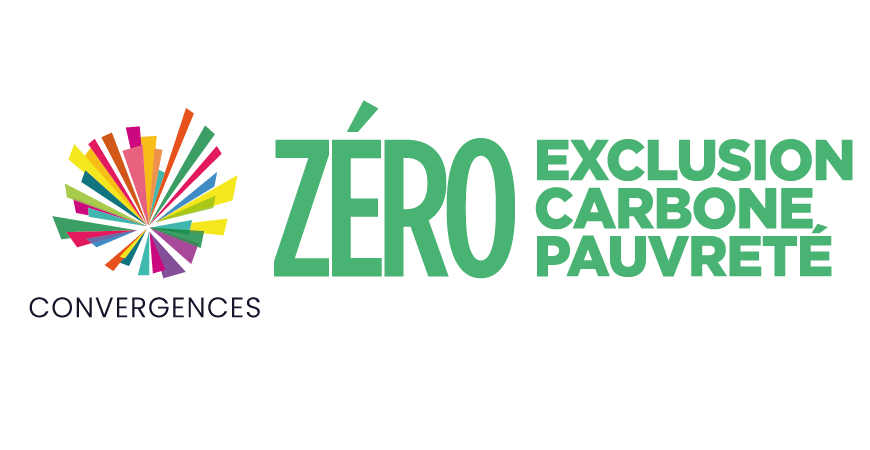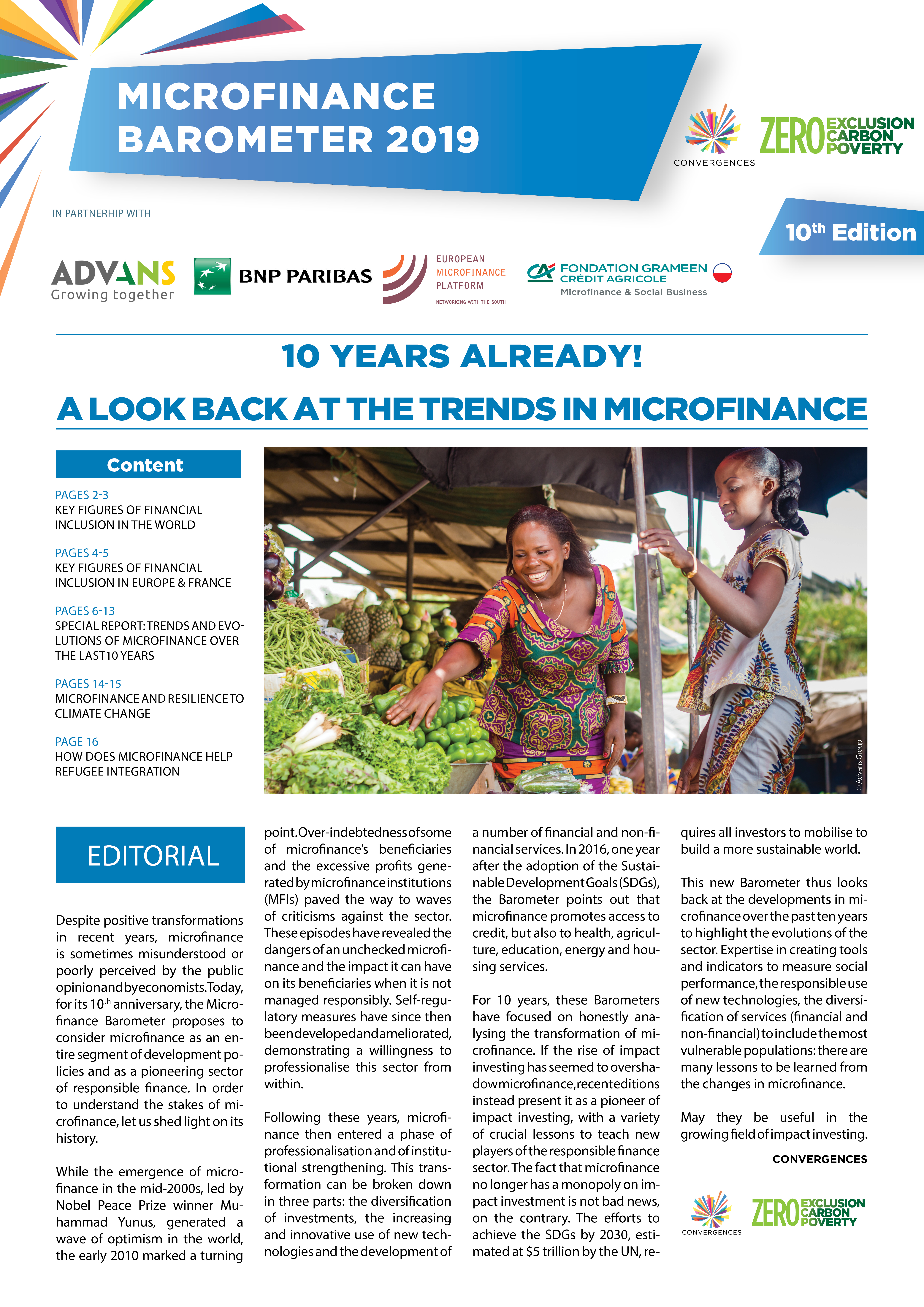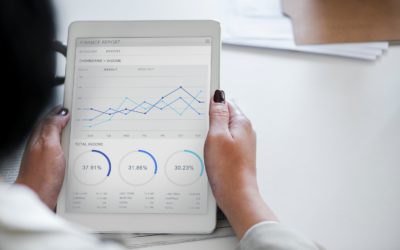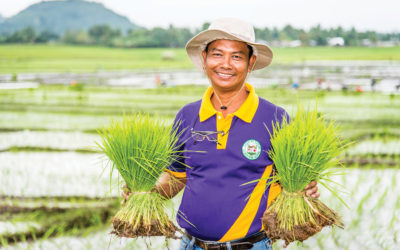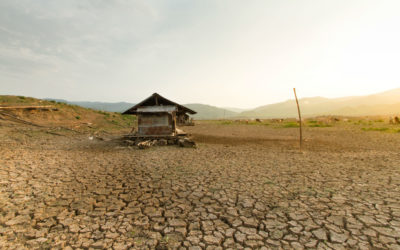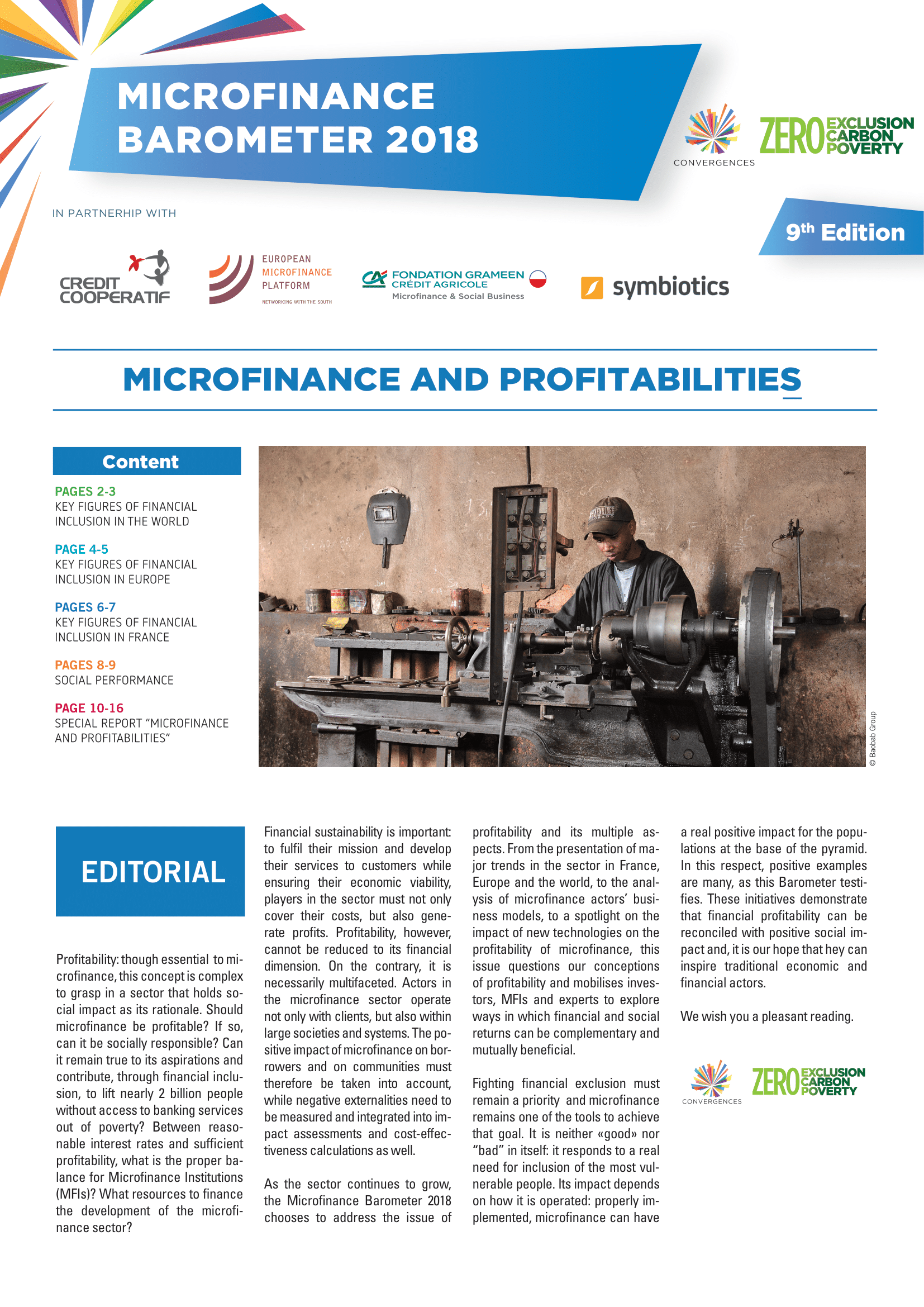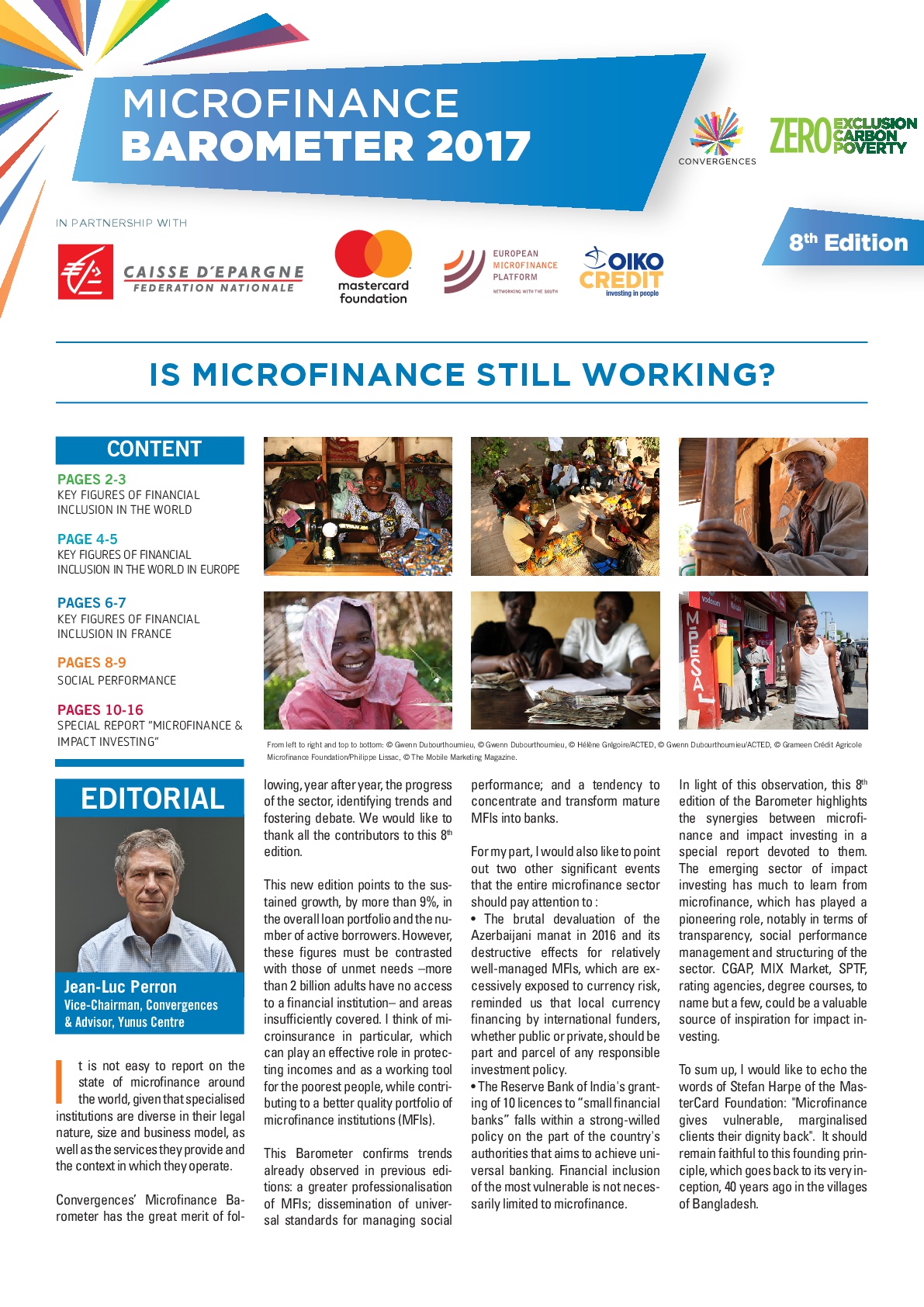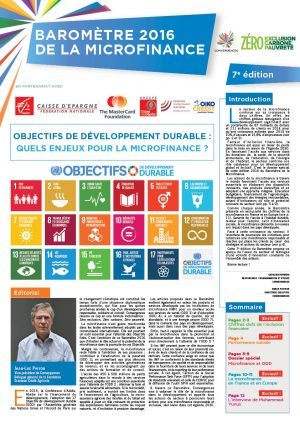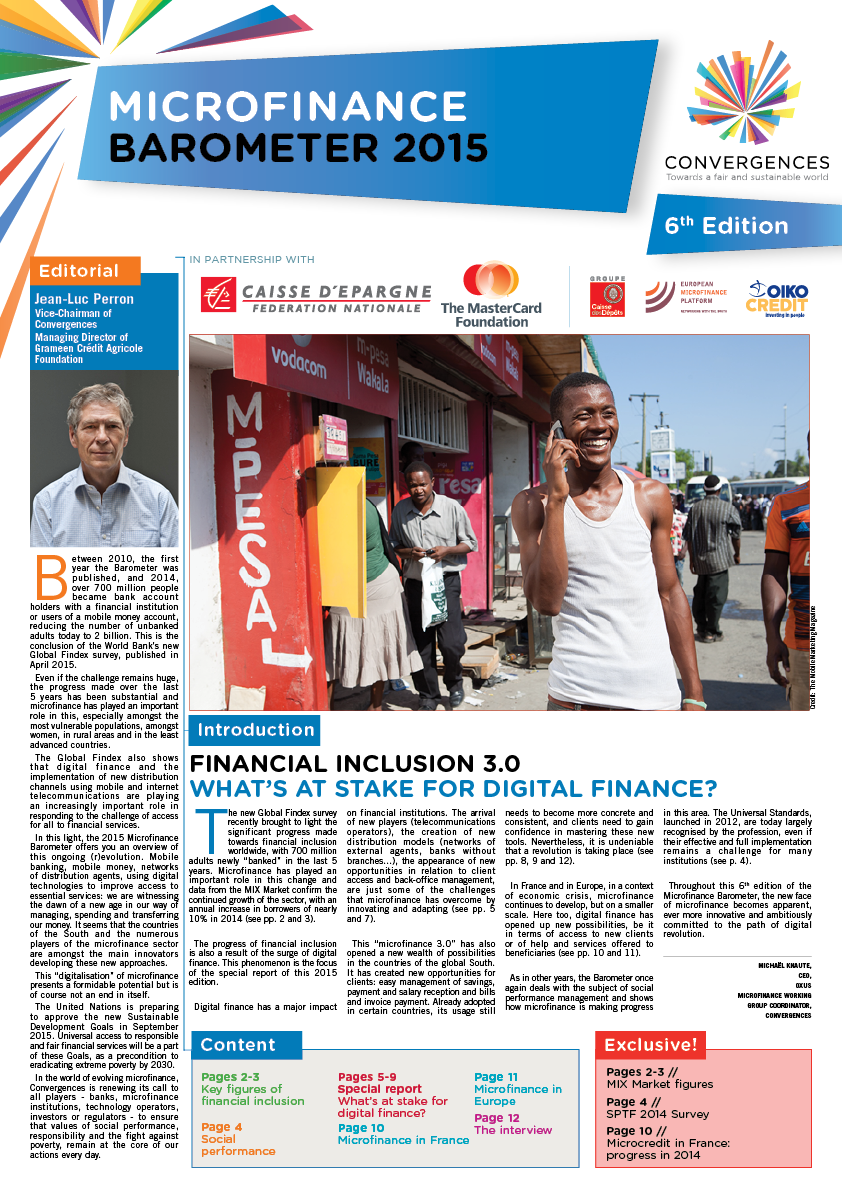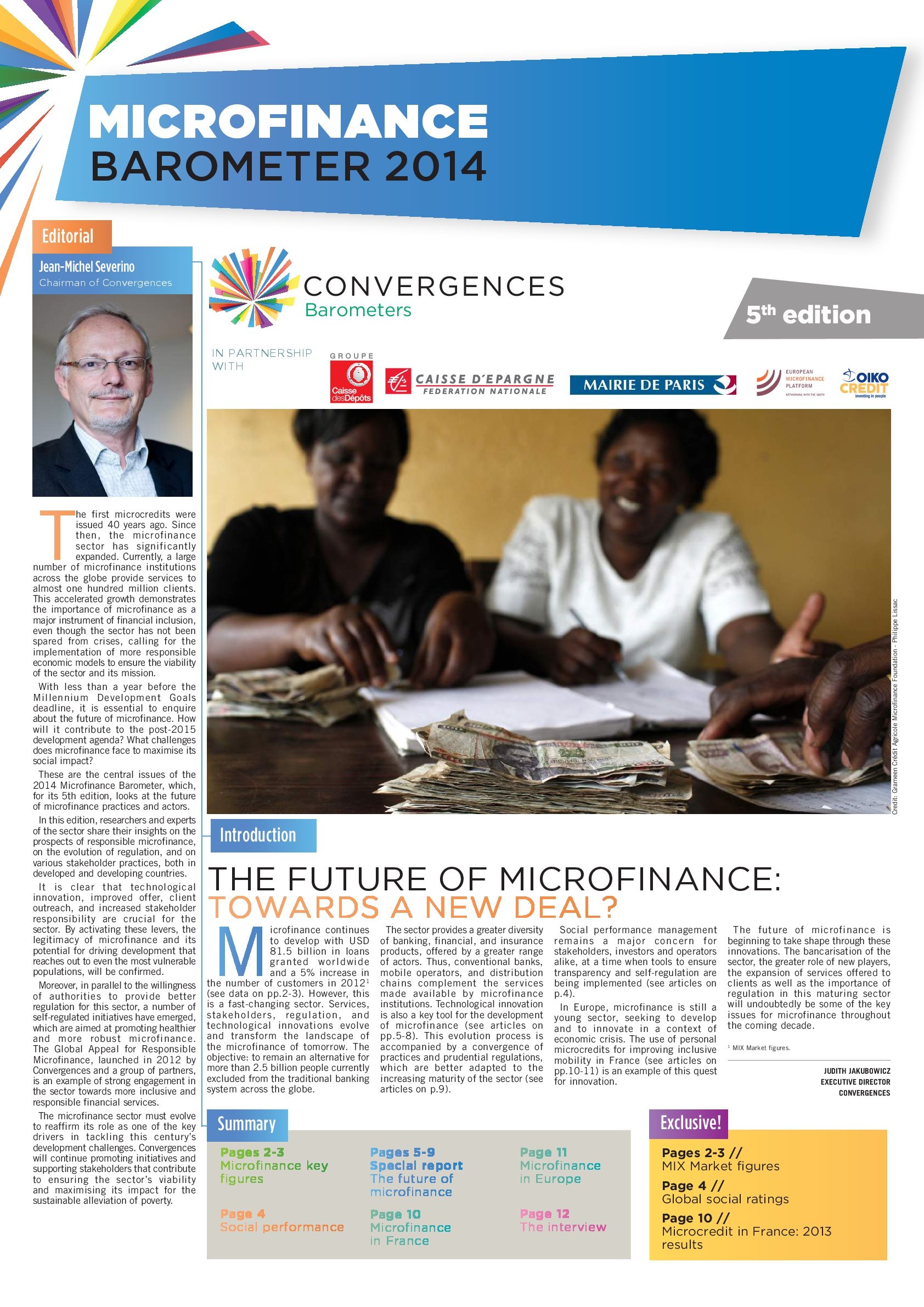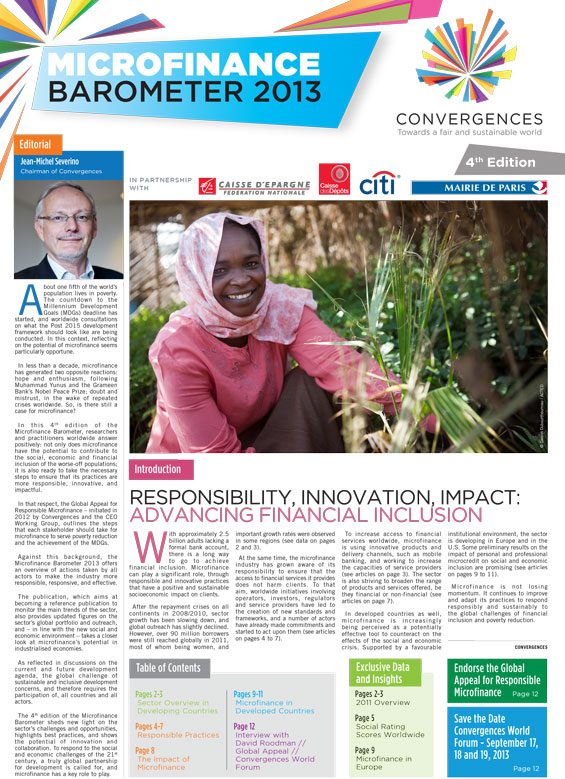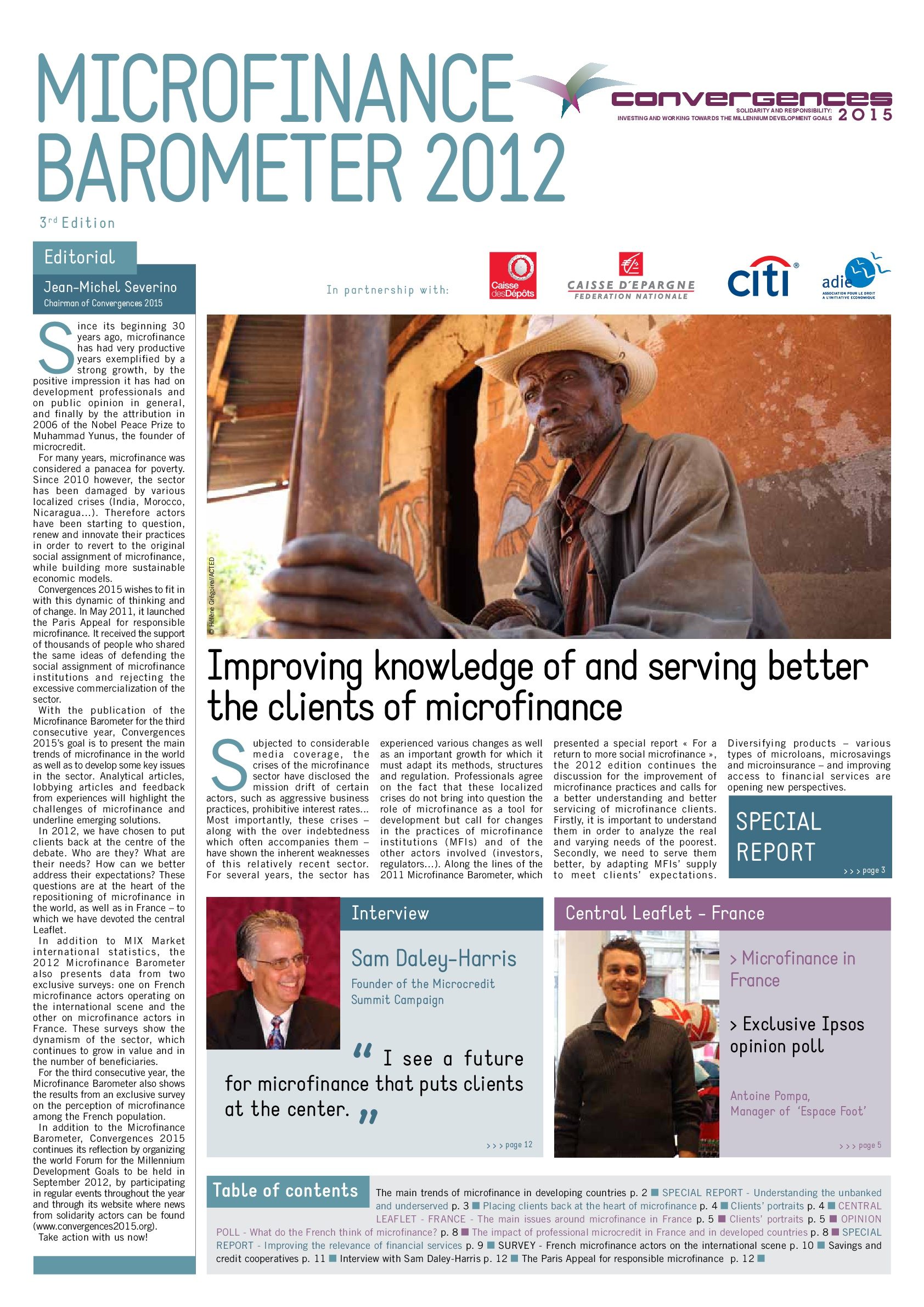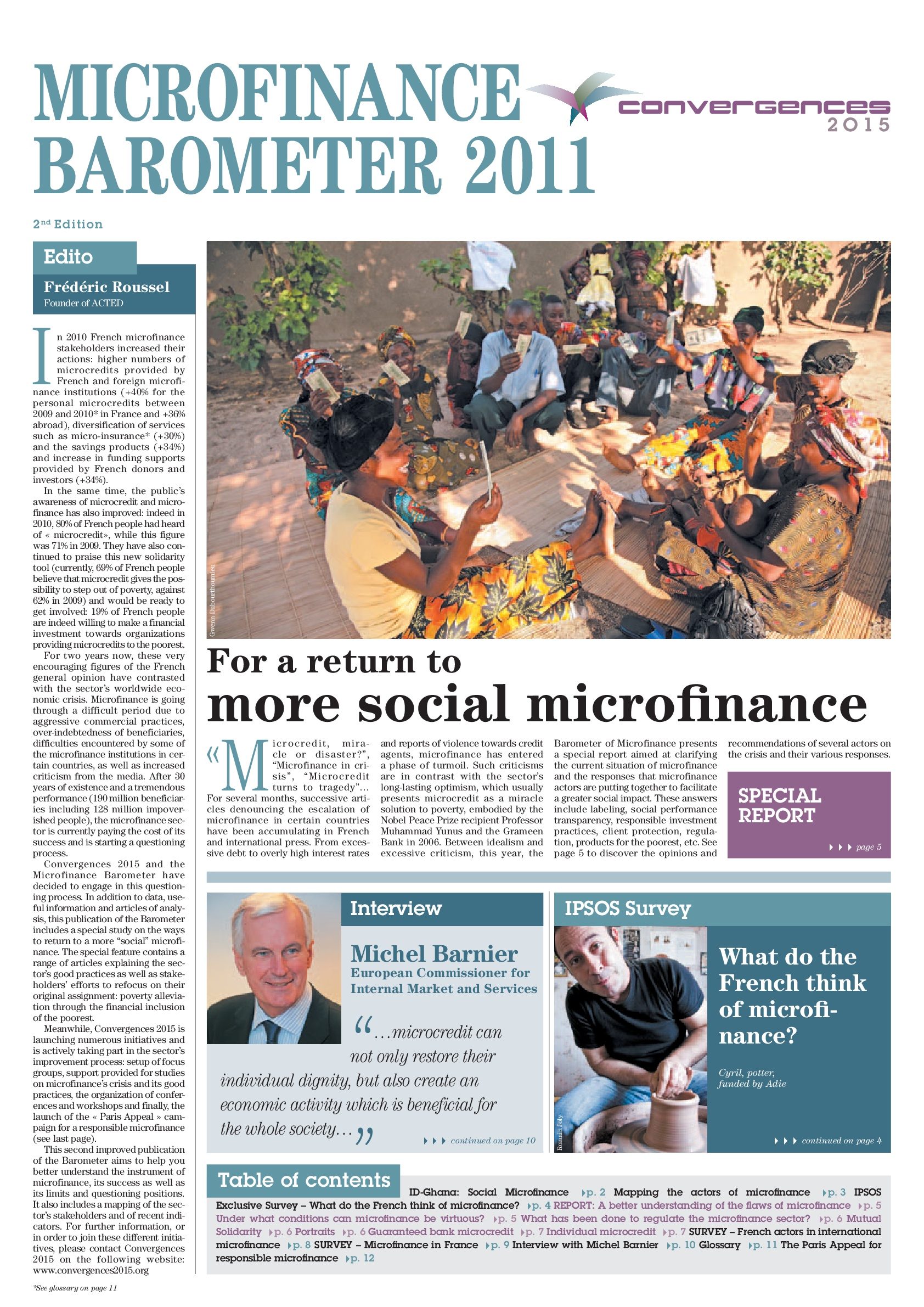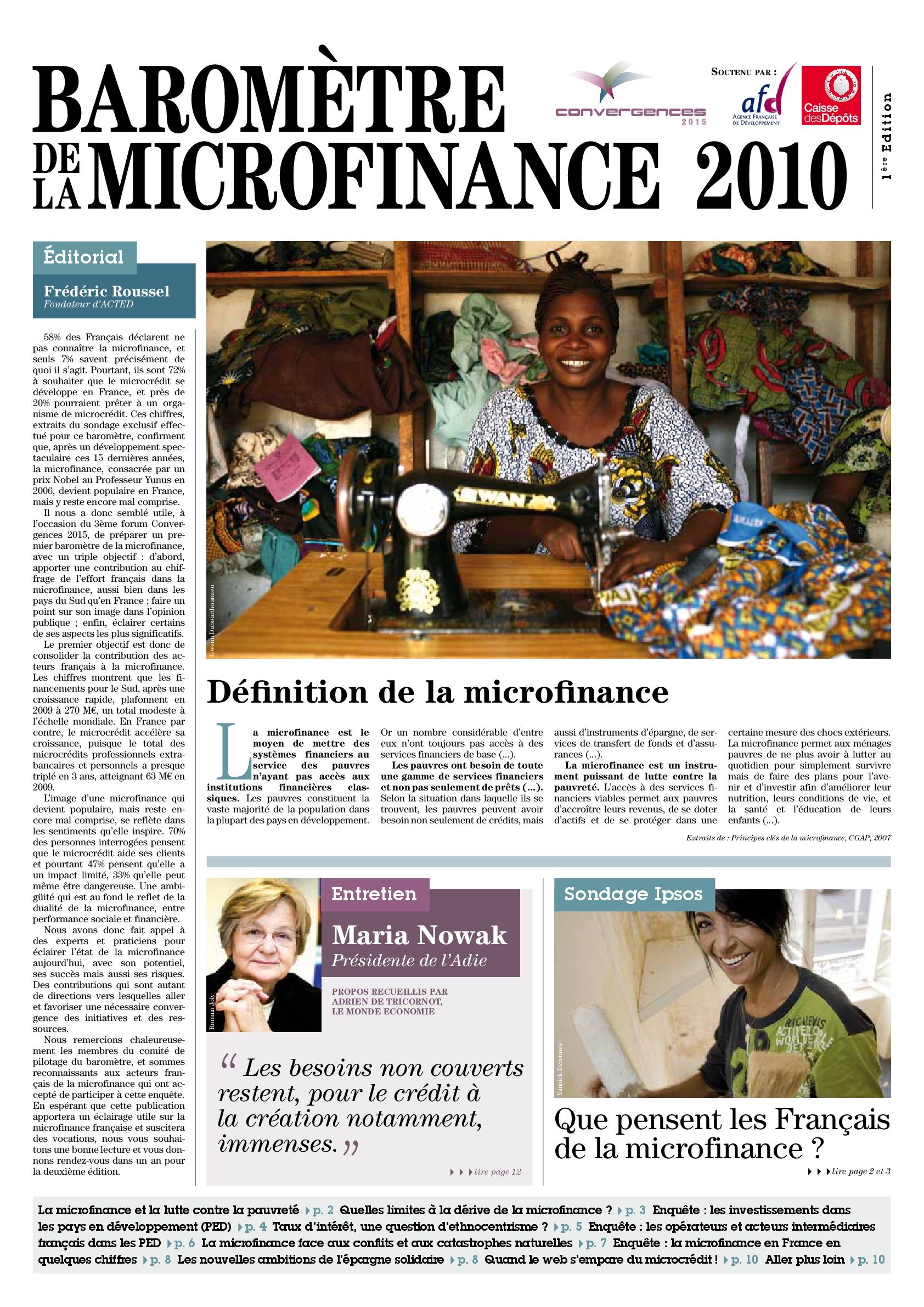To celebrate the 10 years anniversary of the Microfinance Barometer we look back this year at the trends that have shaped the sector over the last decade.
How did the over-indebtedness crises of the 2010’s improve social impact management practices? New technologies can improve the performance of microfinance, but how can we ensure that they are used responsibly? What lessons can microfinance teach new actors in responsible finance? What is the future of microfinance with the advent of impact investing?
Through case studies, expert analyses and interviews, this edition reflects on the episodes that have had a profound impact on microfinance over the past 10 years to highlight the evolutions of the sector. Expertise in creating tools and indicators to measure social performance, the responsible use of new technologies, the diversification of services (financial and non-financial) to include the most vulnerable populations: there are many lessons to be learned from the changes in microfinance. May they be useful in the growing field of impact investing.

ARTICLES FROM THE BAROMETER
Microfinance digitalisation: risk or opportunity?
The digital revolution is profoundly transforming the world of finance and forcing financial service providers to adapt. In this interview, Graham Wright, Executive Director of Microsave, discusses the challenges and risks of this necessary transition for...
Serving refugees: 5 key recommendations for financial service providers*
The number of forcibly displaced people worldwide has hit a record high of 70.8 million in 2018, as showed by the data recently released by UNHCR’s annual Global Trends report. Within this group, the number of refugees in the world — defined as people...
Financiera FDL contributes to the spread of agroecology in Nicaragua
Faced with climate change that is already underway, Nicaragua, especially in its rural areas, is having to adapt rapidly. Local temperature rises, for example, are disrupting low-level coffee production and having a direct impact on coffee farmers’...
How can microfinance adapt to climate risk?
Before climate change even reached top-priority level on the global agenda, microfinance institutions have started to take local action against natural disasters.As the 3rd highest risk area in the world, with more than 60% of its land area exposed to...
(Micro)finance for Resilience: Helping Clients Adapt to Climate Change
The challenge of climate changeNew data on climate change continues to emerge, and it is seldom good. CO2 levels are at historic highs. Arctic ice continues to shrink. Climate-related natural disasters such as hurricanes and drought increase in both...
Digitalisation: what’s at stake for microfinance? Advans point of view
The booming digitalisation in developing countries, especially on the African continent, is one of the main factors behind the increase in financial inclusion witnessed in the past ten years. In Sub-Saharan Africa for example, 42.6% of the adult population...
